An Investigation of Opportunity Charging with Hybrid Energy Storage System on Electric Bus with Two-Speed Transmission
Abstract
:1. Introduction
- (1)
- The combination of the HESS and WPT and the two-speed transmission system is investigated. The collaboration between the systems is analyzed in detail;
- (2)
- A power flow control strategy is proposed, where the battery health protection and range extension are considered;
- (3)
- As a practical bus powertrain model and driving cycle are employed, the analysis result would be a good reference for industry application.
2. Wireless Charging System for Electric Bus
2.1. Wireless Charging System
2.2. Hybrid Energy Storage Electric Bus
2.3. Multi-Speed Transmission
3. The Powertrain Model
3.1. Battery Degradation Model
3.2. The Energy Management Strategy of the Hybrid Energy Storage System with Opportunity Wireless Charging
3.3. Two-Speed Automatic Transmission
4. Results Analysis
The Performance of Multi-Speed Transmission in Terms of Powertrain Efficiency
5. Conclusions
Author Contributions
Funding
Institutional Review Board Statement
Informed Consent Statement
Data Availability Statement
Conflicts of Interest
References
- United States Environmental Protection Agency. Fast Facts: U.S. Transportation Sector GHG Emissions 2019; US EPA: Washington, DC, USA, 2019.
- Beijing Municipal Ecology and Environment Bureau. 2018. Available online: http://sthjj.beijing.gov.cn/bjhrb/index/xxgk69/zfxxgk43/qtfdxx73/zfxxgknb13/1721232/index.html (accessed on 15 September 2022).
- Aber, J. Electric Bus Analysis for New York City Transit; Columbia University: New York, NY, USA, 2016; 37p, Available online: http://www.columbia.edu/~ja3041/Electric%20Bus%20Analysis%20for%20NYC%20Transit%20by%20J%20Aber%20Columbia%20University%20-%20May%202016.pdf (accessed on 15 September 2022).
- Song, Q.; Wang, Z.; Wu, Y.; Li, J.; Yu, D.; Duan, H.; Yuan, W. Could urban electric public bus really reduce the GHG emissions: A case study in Macau? J. Clean. Prod. 2018, 172, 2133–2142. [Google Scholar] [CrossRef]
- Shibagaki, T.; Merla, Y.; Offer, G.J. Tracking degradation in lithium iron phosphate batteries using differential thermal voltammetry. J. Power Sources 2018, 374, 188–195. [Google Scholar] [CrossRef]
- Abdel-Monem, M.; Trad, K.; Omar, N.; Hegazy, O.; Bossche, P.V.D.; Van Mierlo, J. Influence analysis of static and dynamic fast-charging current profiles on ageing performance of commercial lithium-ion batteries. Energy 2017, 120, 179–191. [Google Scholar] [CrossRef]
- BYD Auto Co. Research of Battery Durability Performance; BYD Auto Co.: Shenzhen, China, 2013. [Google Scholar]
- Burke, A.; Liu, Z.; Zhao, H. Present and future applications of supercapacitors in electric and hybrid vehicles. In Proceedings of the 2014 IEEE International Electric Vehicle Conference (IEVC), Florence, Italy, 17–19 December 2014; pp. 1–8. [Google Scholar] [CrossRef]
- Du, J.; Zhang, X.; Wang, T.; Song, Z.; Yang, X.; Wang, H.; Ouyang, M.; Wu, X. Battery degradation minimization oriented energy management strategy for plug-in hybrid electric bus with multi-energy storage system. Energy 2018, 165, 153–163. [Google Scholar] [CrossRef]
- Bi, Z.; Song, L.; De Kleine, R.; Mi, C.; Keoleian, G.A. Plug-in vs. wireless charging: Life cycle energy and greenhouse gas emissions for an electric bus system. Appl. Energy 2015, 146, 11–19. [Google Scholar] [CrossRef]
- Lukic, S.; Pantic, Z. Cutting the Cord: Static and Dynamic Inductive Wireless Charging of Electric Vehicles. IEEE Electrif. Mag. 2013, 1, 57–64. [Google Scholar] [CrossRef]
- Li, W.; Cui, H.; Nemeth, T.; Jansen, J.; Ünlübayir, C.; Wei, Z.; Zhang, L.; Wang, Z.; Ruan, J.; Dai, H.; et al. Deep reinforcement learning-based energy management of hybrid battery systems in electric vehicles. J. Energy Storage 2021, 36, 102355. [Google Scholar] [CrossRef]
- Ruan, J.; Zhang, B.; Liu, B.; Wang, S. The multi-objective optimization of cost, energy consumption and battery degradation for fuel cell-battery hybrid electric vehicle. In Proceedings of the 2021 11th International Conference on Power, Energy and Electrical Engineering (CPEEE), Shiga, Japan, 26–28 February 2021; pp. 50–55. [Google Scholar] [CrossRef]
- Azad, A.; Saha, T.; Zane, R.; Pantic, Z. Design of hybrid energy storage systems for wirelessly charged electric vehicles. In Proceedings of the 2015 IEEE 82nd Vehicular Technology Conference (VTC2015-Fall), Boston, MA, USA, 6–9 September 2015; pp. 1–5. [Google Scholar] [CrossRef]
- Choi, S.Y.; Gu, B.W.; Jeong, S.Y.; Rim, C.T. Advances in Wireless Power Transfer Systems for Roadway-Powered Electric Vehicles. IEEE J. Emerg. Sel. Top. Power Electron. 2015, 3, 18–36. [Google Scholar] [CrossRef]
- Bi, Z.; Keoleian, G.A.; Ersal, T. Wireless charger deployment for an electric bus network: A multi-objective life cycle optimization. Appl. Energy 2018, 225, 1090–1101. [Google Scholar] [CrossRef]
- Ruan, J.; Walker, P.D.; Zhang, N.; Wu, J. An investigation of hybrid energy storage system in multi-speed electric vehicle. Energy 2017, 140, 291–306. [Google Scholar] [CrossRef]
- Siemens. eBus Charging Infrastructure; Siemens Mobil: Munich, Germany, 2016; pp. 1–17. [Google Scholar]
- Ruan, J.; Walker, P.; Wu, J.; Zhang, N.; Zhang, B. Development of continuously variable transmission and multi-speed dual-clutch transmission for pure electric vehicle. Adv. Mech. Eng. 2018, 10, 1687814018758223. [Google Scholar] [CrossRef]
- Qin, D.-T.; Yao, M.-Y.; Chen, S.-J.; Lyu, S.-K. Shifting process control for two-speed automated mechanical transmission of pure electric vehicles. Int. J. Precis. Eng. Manuf. 2016, 17, 623–629. [Google Scholar] [CrossRef]
- Ruan, J.; Walker, P.; Zhang, N. A comparative study energy consumption and costs of battery electric vehicle transmissions. Appl. Energy 2016, 165, 119–134. [Google Scholar] [CrossRef]
- Wu, J.; Walker, P.D.; Ruan, J.; Zhang, N. Target torque estimation for gearshift in dual clutch transmission with uncertain parameters. Appl. Math. Model. 2017, 51, 1–20. [Google Scholar] [CrossRef]
- Tian, Y.; Ruan, J.; Zhang, N.; Wu, J.; Walker, P. Modelling and control of a novel two-speed transmission for electric vehicles. Mech. Mach. Theory 2018, 127, 13–32. [Google Scholar] [CrossRef]
- Mousavi, M.S.R.; Pakniyat, A.; Wang, T.; Boulet, B. Seamless dual brake transmission for electric vehicles: Design, control and experiment. Mech. Mach. Theory 2015, 94, 96–118. [Google Scholar] [CrossRef]
- Ren, Q.; Crolla, D.A.; Morris, A. Effect of transmission design on Electric Vehicle (EV) performance. In Proceedings of the 2009 IEEE Vehicle Power and Propulsion Conference, Dearborn, MI, USA, 7–10 September 2009; pp. 1260–1265. [Google Scholar] [CrossRef] [Green Version]
- Verbelen, F.; Druant, J.; Derammelaere, S.; Vansompel, H.; De Belie, F.; Stockman, K.; Sergeant, P. Benchmarking the permanent magnet electrical variable transmission against the half toroidal continuously variable transmission. Mech. Mach. Theory 2017, 113, 141–157. [Google Scholar] [CrossRef]
- Ruan, J.; Song, Q.; Yang, W. The application of hybrid energy storage system with electrified continuously variable transmission in battery electric vehicle. Energy 2019, 183, 315–330. [Google Scholar] [CrossRef]
- Roozegar, M.; Angeles, J. The optimal gear-shifting for a multi-speed transmission system for electric vehicles. Mech. Mach. Theory 2017, 116, 1–13. [Google Scholar] [CrossRef]
- Zhu, B.; Zhang, N.; Walker, P.; Zhan, W.; Zhou, X.; Ruan, J. Two-Speed DCT Electric Powertrain Shifting Control and Rig Testing. Adv. Mech. Eng. 2013, 5, 323917. [Google Scholar] [CrossRef]
- GB/T38146.2-2019; China Automotive Test Cycle—Part 2: Heavy-Duty Commercial Vehicles. China National Standardization Administration: Beijing, China, 2019.
- Zhou, X.; Qin, D.; Hu, J. Multi-objective optimization design and performance evaluation for plug-in hybrid electric vehicle powertrains. Appl. Energy 2017, 208, 1608–1625. [Google Scholar] [CrossRef]
- Song, Z.; Hofmann, H.; Li, J.; Han, X.; Ouyang, M. Optimization for a hybrid energy storage system in electric vehicles using dynamic programing approach. Appl. Energy 2015, 139, 151–162. [Google Scholar] [CrossRef]

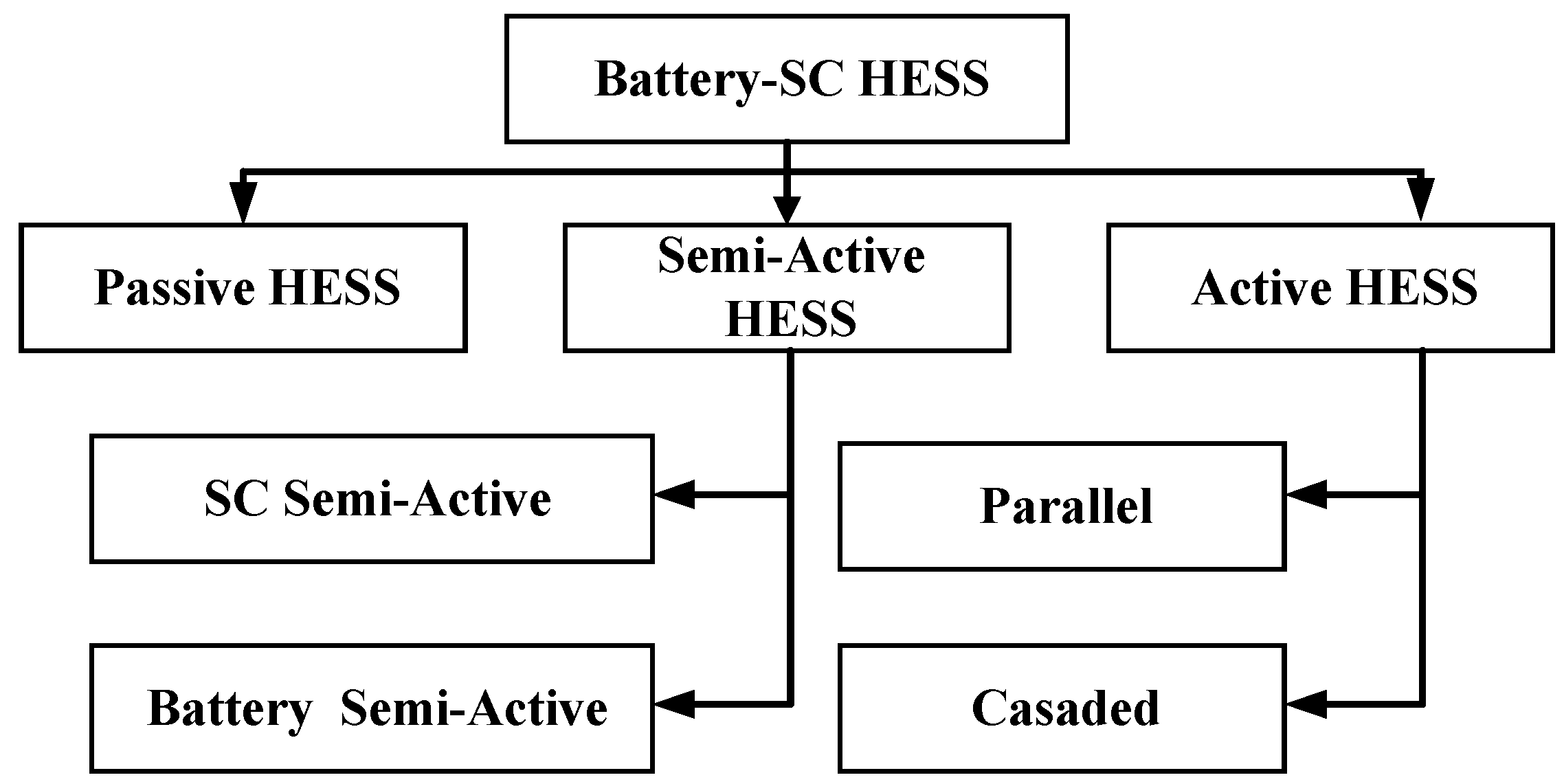


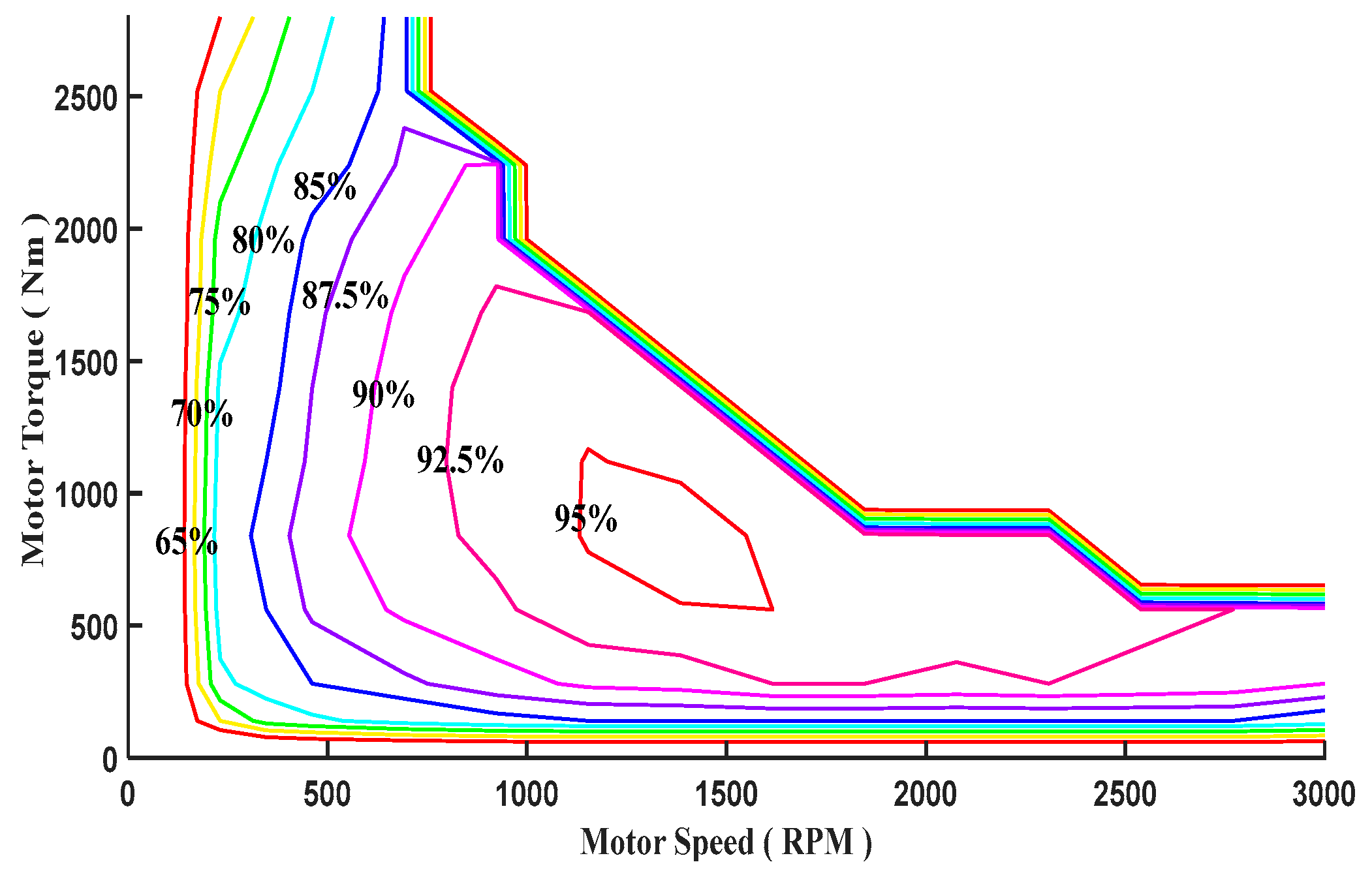
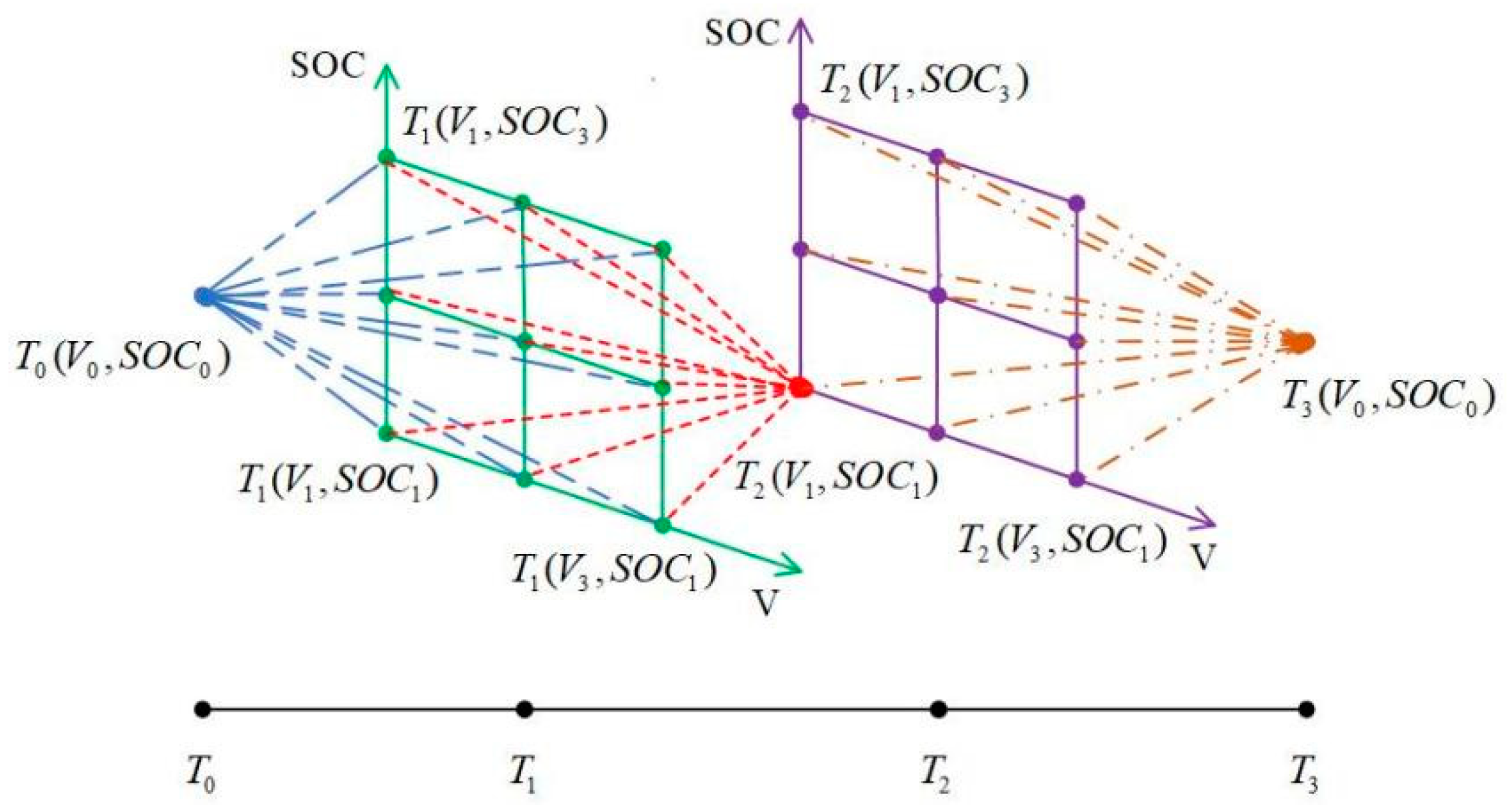
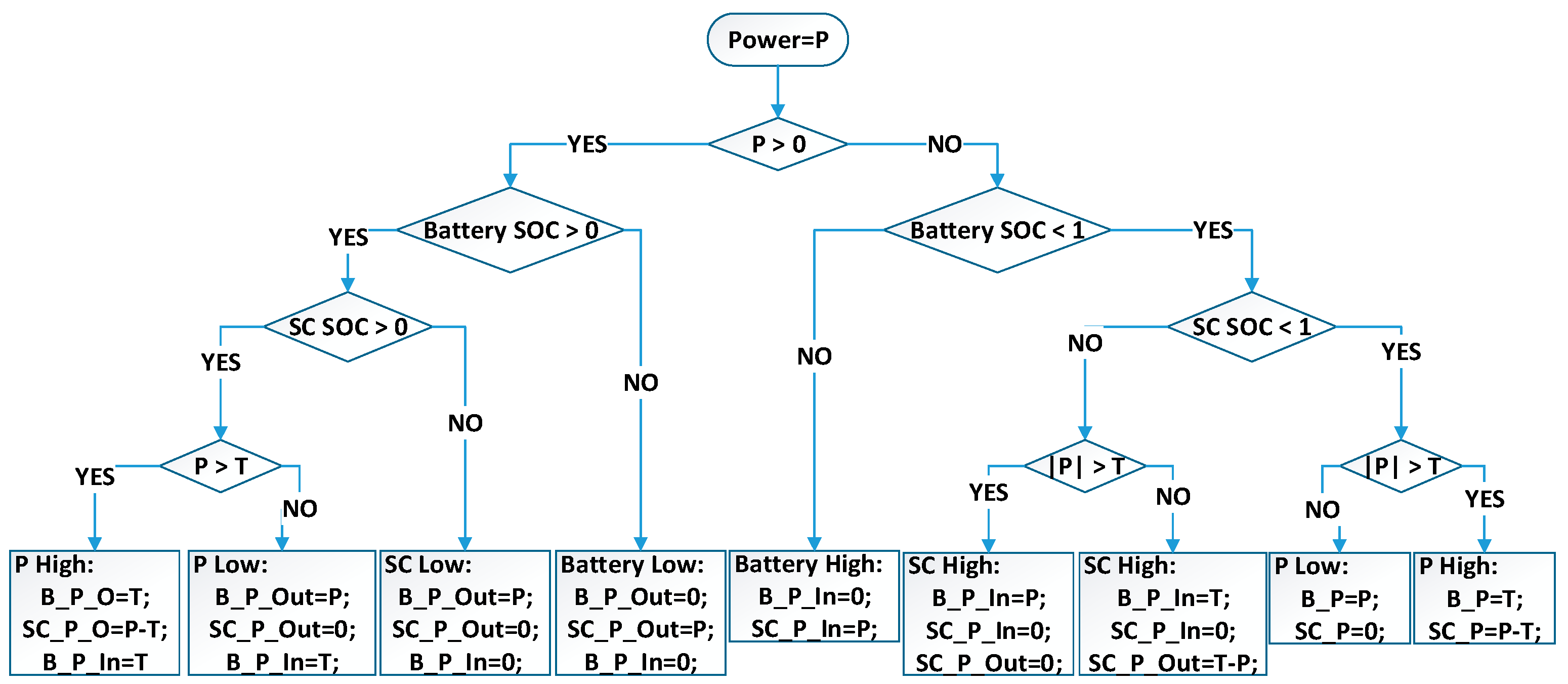
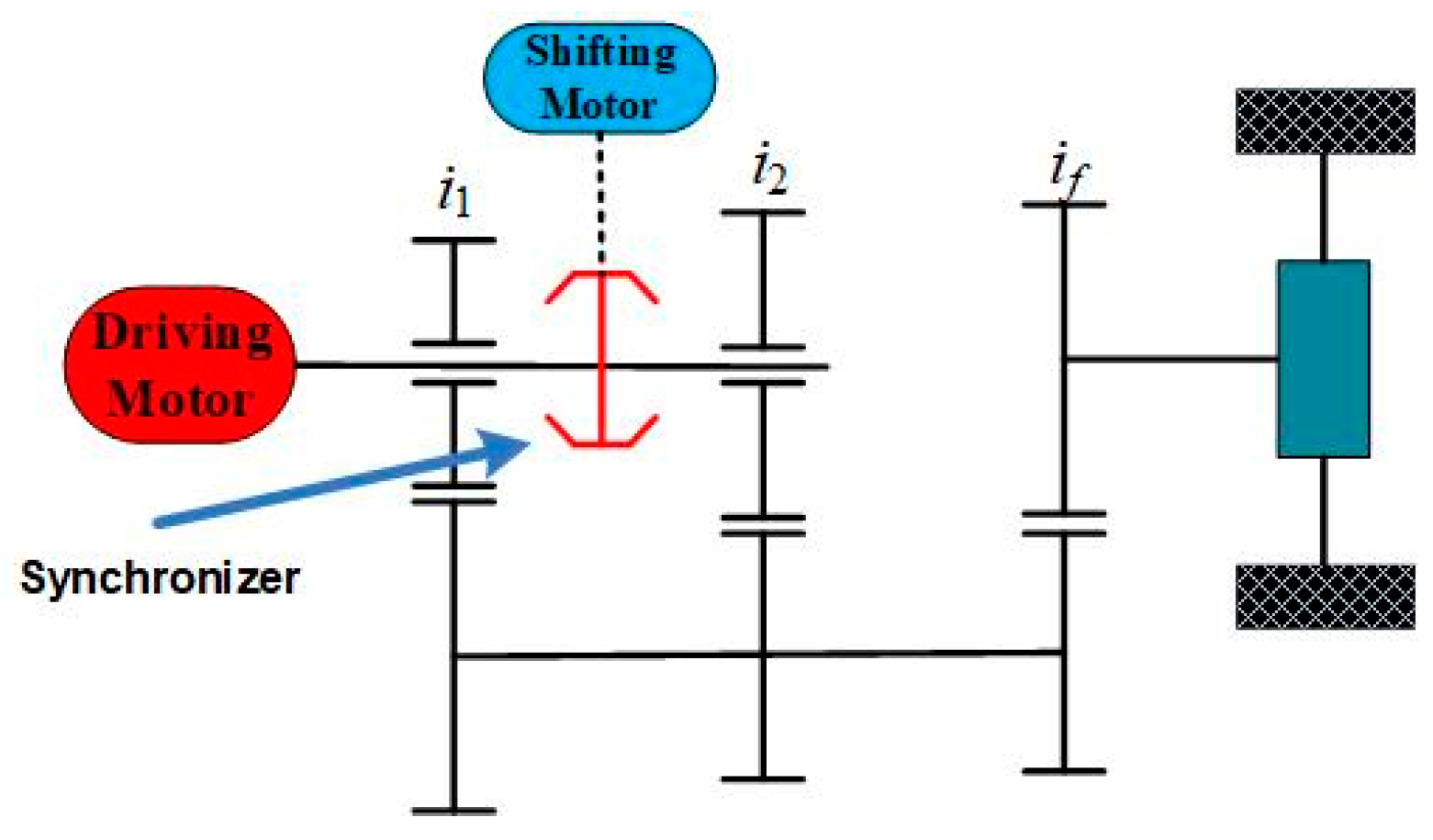


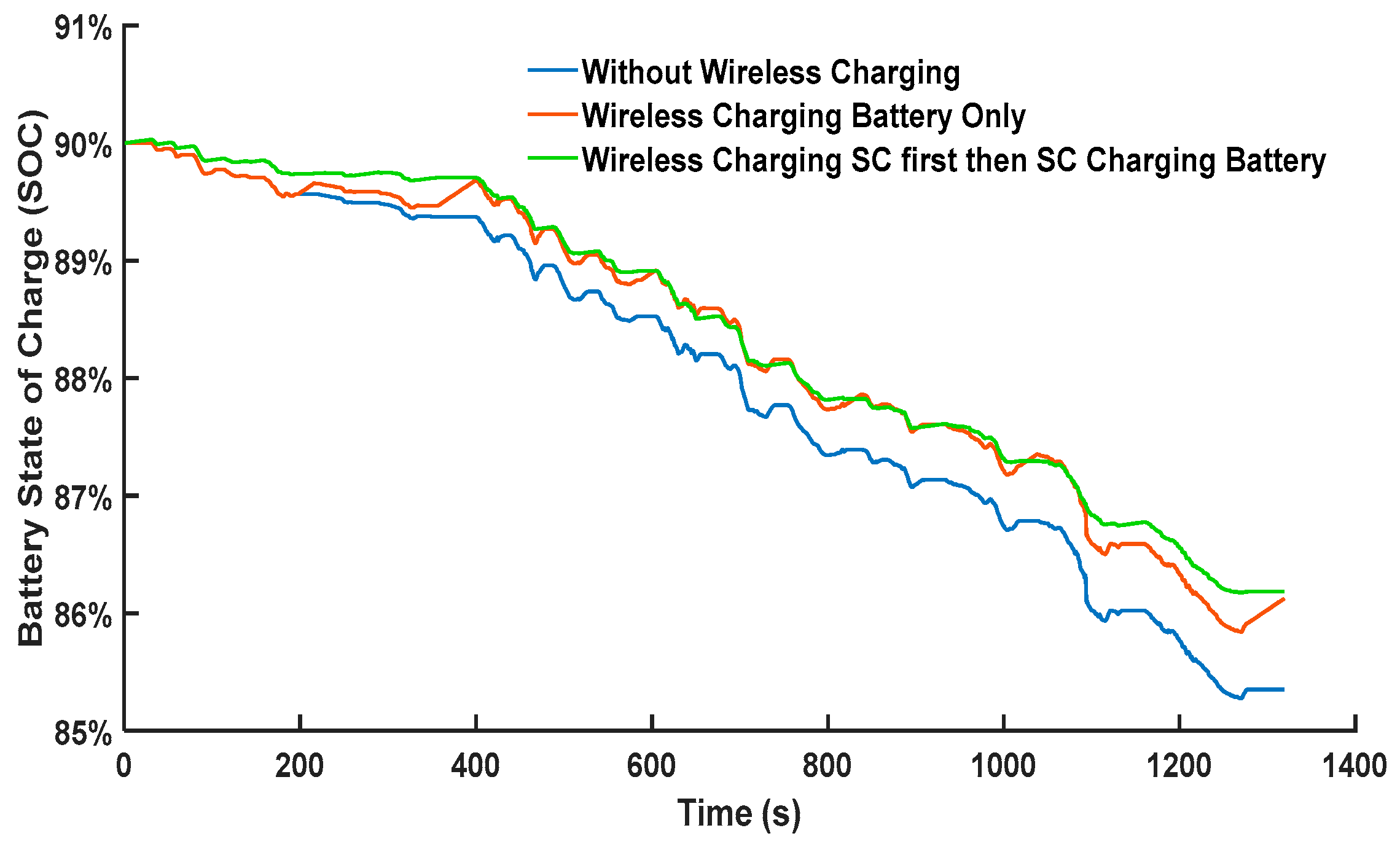

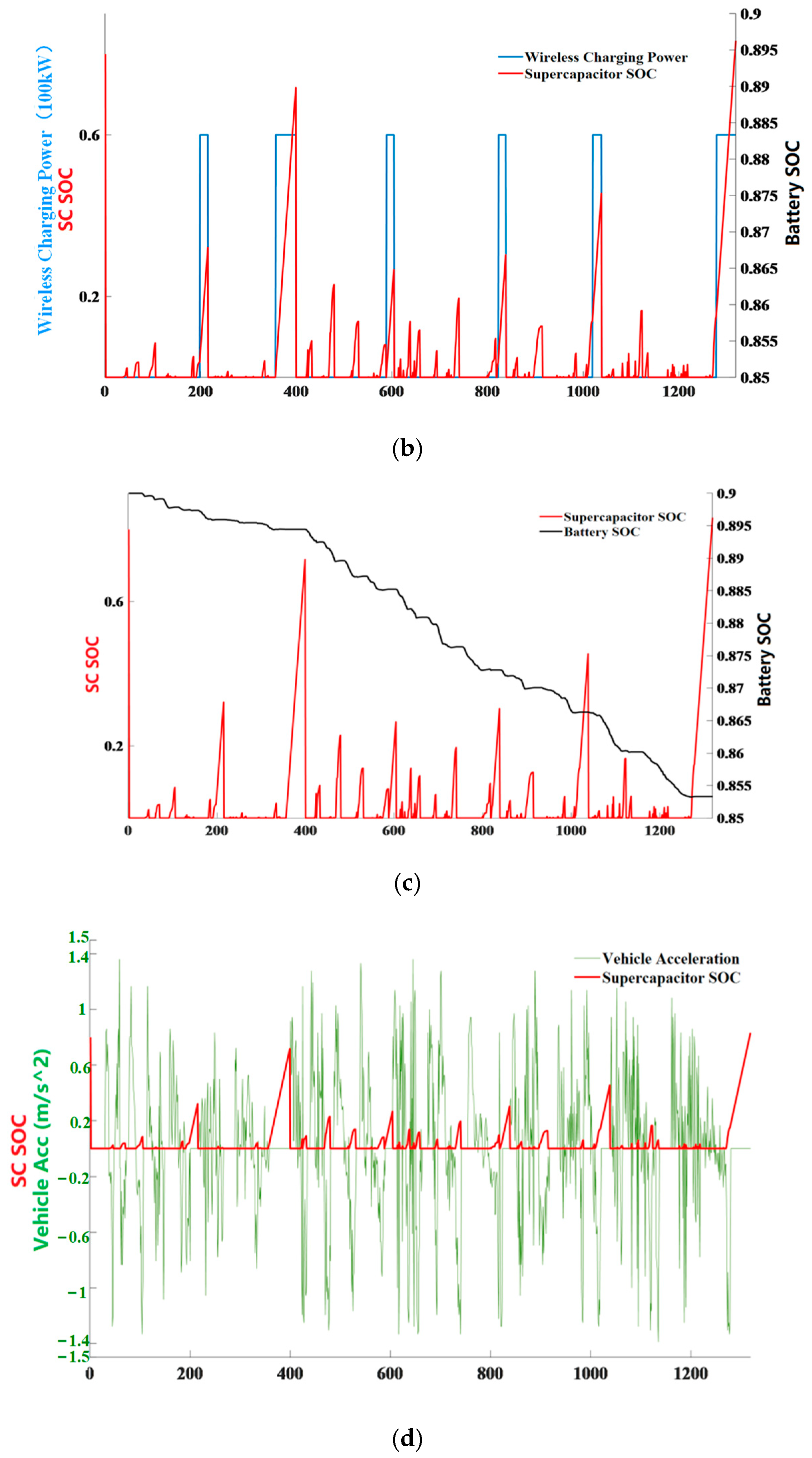
| Vehicle Mass | 17,600 kg | Max. Speed | 70 km/h |
| Battery Pack Capacity | 165 kWh | Battery Pack Voltage | 570 V |
| Motor Max. Torque | 2800 N | Tyre Radius | 0.57 m |
| Motor Max Speed | 3000 RPM | Frontal Area | 8 m2 |
| Motor Peak Power | 200 kW | Gear Ratio | 9.75 |
| Charging Time (Cable) | 1.5 h | SC capacity | 0.8 kWh |
| Energy Consumption per CHTC-B | Cycles per Cable Charge * | Driving Range/Cycles Extension per Cable Charge * | |
|---|---|---|---|
| No wireless charging | 7.67 kWh | 19.36 ≈ 19 | --- |
| Wireless Charging Battery | 6.40 kWh | 23.2 ≈ 23 | 21.96 km ≈ 4 CHTC-B cycles |
| Wireless Charging SC, then, to Battery | 6.29 kWh | 23.6 ≈ 23 | 21.96 km ≈ 4 CHTC-B cycles |
| Battery Capacity Loss per CHTC-B | Improvement | Improvement | |
|---|---|---|---|
| Fast Cable Charging | 0.50 Wh | --- | --- |
| Wireless Charging Battery | 0.43 Wh | 14% | --- |
| Wireless Charging SC, then to Battery | 0.40 Wh | 20% | 7% |
Publisher’s Note: MDPI stays neutral with regard to jurisdictional claims in published maps and institutional affiliations. |
© 2022 by the authors. Licensee MDPI, Basel, Switzerland. This article is an open access article distributed under the terms and conditions of the Creative Commons Attribution (CC BY) license (https://creativecommons.org/licenses/by/4.0/).
Share and Cite
Yang, Y.; Wang, Z.; Wang, S.; Lin, N. An Investigation of Opportunity Charging with Hybrid Energy Storage System on Electric Bus with Two-Speed Transmission. Sustainability 2022, 14, 11918. https://doi.org/10.3390/su141911918
Yang Y, Wang Z, Wang S, Lin N. An Investigation of Opportunity Charging with Hybrid Energy Storage System on Electric Bus with Two-Speed Transmission. Sustainability. 2022; 14(19):11918. https://doi.org/10.3390/su141911918
Chicago/Turabian StyleYang, Ying, Zhenpo Wang, Shuo Wang, and Ni Lin. 2022. "An Investigation of Opportunity Charging with Hybrid Energy Storage System on Electric Bus with Two-Speed Transmission" Sustainability 14, no. 19: 11918. https://doi.org/10.3390/su141911918






